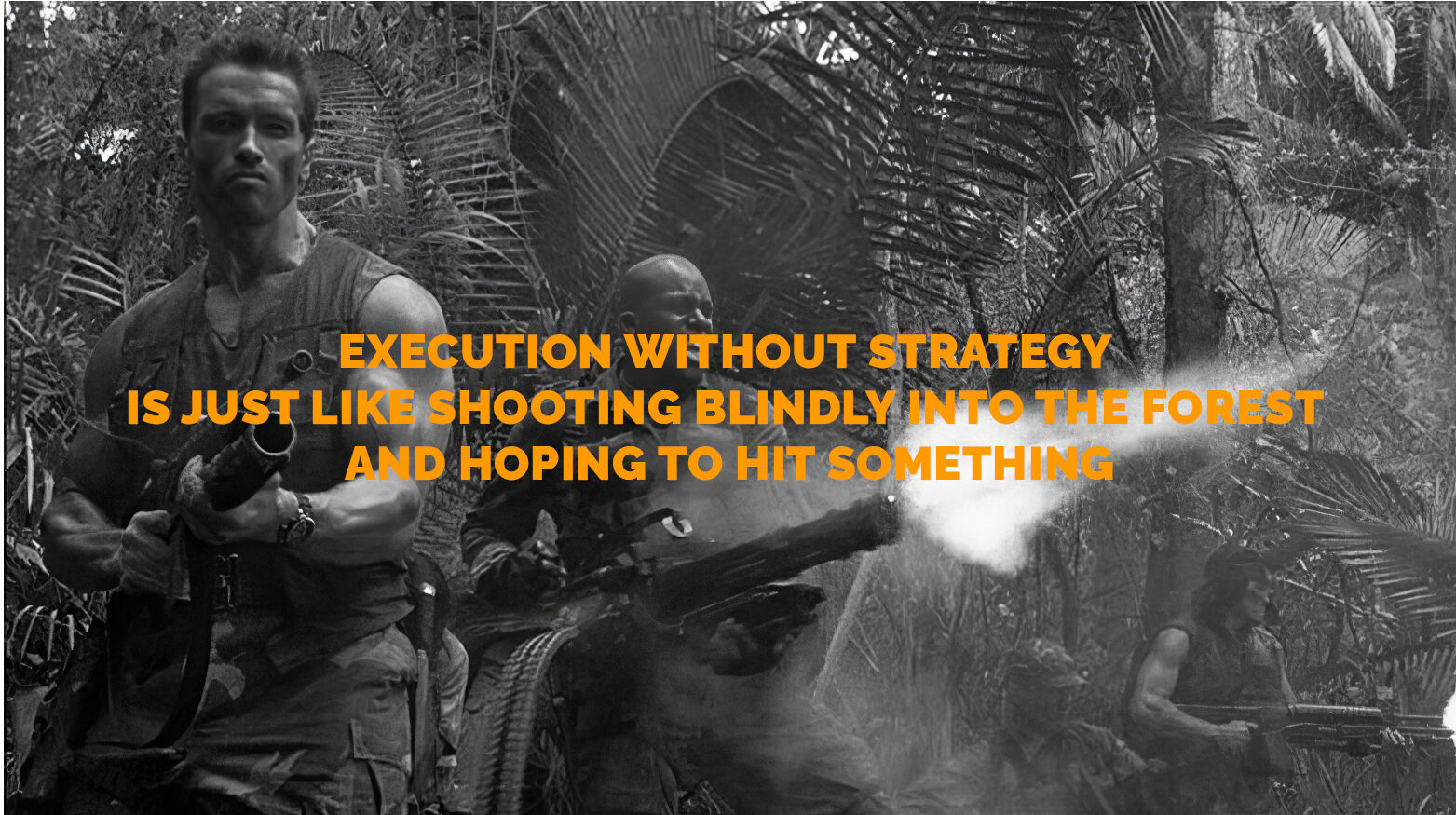Kde začíná opravdové kreativní peklo? U generických a vágních zadání. Obvykle to vypadá takto: brief přistane v agentuře na stole account manažera – nezáleží, zda jde o tendr, image kampaň nebo jedno rádio – a po krátké pauze se přesune do kreativního oddělení s malými nebo žádnými změnami. Většinou v něm najdete věty typu „Chceme vybudovat awareness.“, „Vytvořte image pro xy.“, nebo tolik oblíbené „Chceme zvýšit obrat o 15 % či prodat tolik a tolik…“. Často ještě s průvodním komentářem od accounta, že „Není čas na hrdinství.“ Zní vám to povědomě?
To je okamžik, kdy často začíná kreativní martyrium. Můžete mít sice ten nejtalentovanější tým, bez strategie ale bude jen střílet naslepo do lesa a doufat, že něco trefí. Samozřejmě, něco asi trefí, a i když celá kreativní produkce může vypadat impozantně, jde vždy jen o plýtvání zdroji, kreativním potenciálem a energie všech zúčastněných. Proč? Protože v případě slabé nebo žádné strategie stojí hodnocení nápadu na nekonečném, co se komu nelíbí, na tyranii „ALE“ a ne na otázce, „Jak toto naplňuje směřování značky a jak to spotřebitel shledá relevantním pro svůj život?“. Při výběru myšlenky se maximum energie směřuje k budování konsenzu a následně do jejího zabalení do nějakého strategického příběhu, který ji před klientem či jeho šéfy ospravedlní – děsivý, ale poměrně běžný scénář. Vzpomínám si na jednoho starého přítele, který často říkal týmu: „You just have to bullshit your way through…“. Stejně jako tenkrát i dnes mi takový přístup připadá zásadně chybný.
Pamatujte, skvělé briefy vždy vycházejí z hlubokého porozumění DNA a příběhu značky, jejích produktů či služeb, potřeb jejích zákazníků, a především ze skutečné lásky k nim. Vidíte ten diametrální rozdíl v přístupu? Je markantní. Ve špatném zadání je zákazník pouze číslem a nástrojem zisku – nikdo na něj nemyslí. Zatímco kvalitní strategie vždy podtrhuje a vyzvedává přidanou hodnotu, kterou vnáší do jeho života.
Zkušenost mě naučila, že čím víc času strávíte spolu s klientem nad vývojem a cizelováním strategie a příběhu značky, tím lepší bude brief a tím silnější bude impakt komunikace na vztah se zákazníkem. A taková investice se vyplatí pokaždé. Protože stále platí, že sebelepší exekuce špatné strategie je jen onou „lipstick on a gorilla“ a vždy nevyhnutelně prohraje ve srovnání se silnou strategií, byť jen trapně překlopenou do exekuce.
Execution without a strategy is like setting sail without a compass.
Where does the real creative hell begin? For generic and vague assignments. It usually goes like this: the brief lands on the desk of the account manager at the agency – it doesn’t matter if it’s a tender, an image campaign or a single radio – and after a short pause it moves to the creative department with little or no changes. Most of the time, you will find sentences like „We want to build awareness,“ „Create an image campaign for xy.“, or the much-loved „We want to increase turnover by 15% or sell so much and so much…“. Often with an accompanying comment from the account that „It’s not time for heroism.“ Does this sound familiar?
This is when creative martyrdom often begins. You can have the most talented team, but without a strategy, they’ll just be shooting blindly into the woods and hoping to hit something. Of course, something is bound to hit, and while the entire creative output may look impressive, it’s always just a waste of resources, creative potential, and energy for everyone involved. Why? Because in the case of a weak or no strategy, the evaluation of the idea is based on the endless, what no one likes, on the tyranny of „BUT“ and not on the question, „How does this fulfill the direction of the brand and how will the consumer find it relevant to his life?“. When choosing an idea, the maximum energy is directed to building consensus and then wrapping it in some strategic story that will justify it to the client or his bosses – a scary but fairly common scenario. I remember an old friend who often said to the team: „You just have to bullshit your way through…“. As then, as now, such an approach seems fundamentally flawed to me.
Remember, great briefs always come from a deep understanding of the DNA and story of the brand, its products or services, the needs of its customers, and above all, a genuine love for them. Do you see the stark difference in approach? It is striking. In a bad assignment, the customer is just a number and a tool for profit – no one thinks about them. While a quality strategy always underlines and highlights the added value it brings to his life.
Experience has taught me that the more time you spend together with the client on developing and refining the brand strategy and story, the better the brief will be and the stronger the impact of communication on the relationship with the customer will be. And such an investment pays off every time. Because it is still true that the best execution of a bad strategy is just „lipstick on a gorilla“ and will always inevitably lose compared to a strong strategy, even if it is awkwardly turned into an execution.
